Is there any group of culinary plants more useful than herbs? I can think of nothing else that has that near-magical ability to transform the most mundane of meals into something special by adding a host of rich and complex flavours as well as vitamins and valuable nutrients to a dish, whether it’s a few generous handfuls of freshly harvested coriander, mint and parsley in a bowl of couscous or a sprinkle of lovage in fish chowder. And yet it’s always surprising to discover the number of passionate home cooks who don’t bother to grow their own, instead choosing to buy their less fresh and far less flavoursome equivalents in a supermarket. The reason so often given is lack of growing space, to which my answer is always a disbelieving “Pah”.
The truth is that most useful culinary herbs can be grown in pots or tubs while plenty will stay compact enough to grow very happily in a window-box. Thyme for example, will grow in a small pot or even amongst narrow paving cracks as long as you give it a warm, sunny spot and keep it well watered. Just make sure to add a few handfuls of horticultural grit to a good quality soil-based compost to ensure sharp drainage. For culinary purposes, plain old common thyme (Thymus vulgaris) is one of the most useful, with a rich, almost medieval flavour that adds punch to stews, stuffings, roasts, soups and even when its soft, fresh leaves and tiny flowers are used in tiny amounts- to a salad. Rosemary (Rosmarinus officnalis), hyssop (Hyssopus officinalis) and pot marjoram (Origanum onites) are examples of other sun-loving shrubby or perennial herbs that enjoy full sun and a free-draining growing medium. For container growing, go for the relatively compact, low-growing form, Rosmarinus officinalis 'Prostratus' rather than the more upright forms unless you can give the latter a large pot.
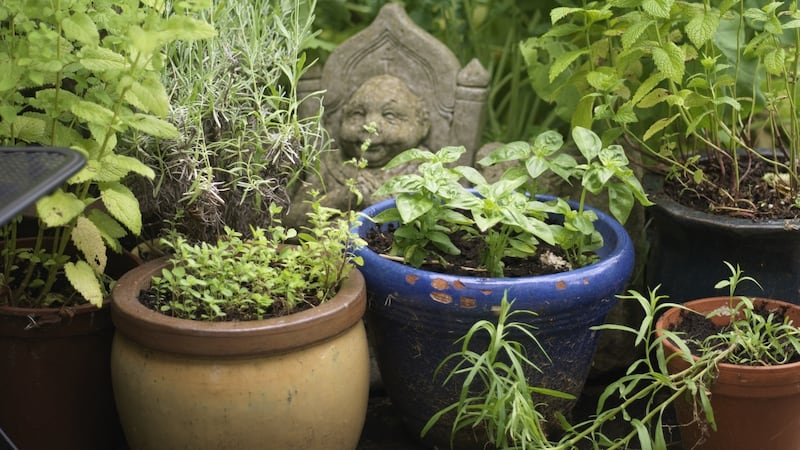
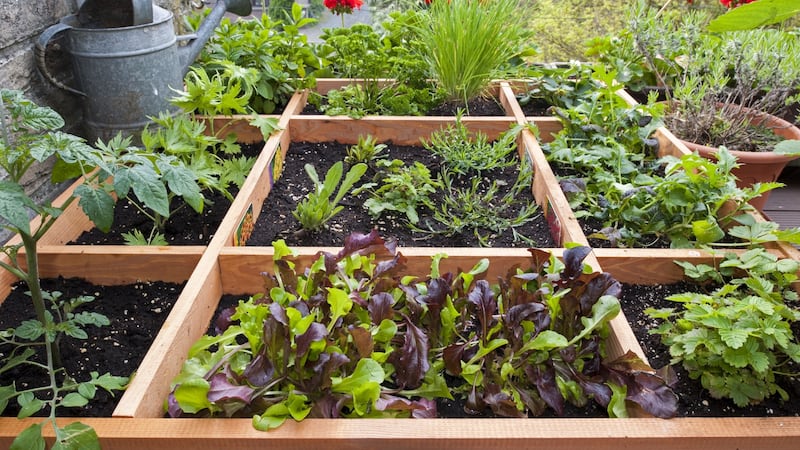
Likewise, culinary mint is perfect for container-growing, which usefully restricts its rambling root system; grown in the open ground, this naturally invasive herb will quietly but ruthlessly colonise almost any garden. A hardy, herbaceous perennial, it relishes a cool, damp, rich soil in either light shade or full sun. While there are many different kinds, both the common or garden mint (Mentha spicata) and peppermint (Mentha x piperita) are great all-rounders perfect for using in a mint sauce, salad or mojito, or to sprinkle on new potatoes (yum).
Parsley is another compact herb easily be grown in a window-box, garden trough or pot as long as you give it a rich, cool soil in light shade or full sun and keep it well-watered. For the best flavour, choose what's known as flat-leaf parsley (Petroselinum crispum), especially the larger-growing productive variety known as 'Italian Giant'. Challenging to grow from seed, you'll find pot-grown specimens in good garden centres at this time of year. Just bear in mind that this relatively short-lived biennial herb will need to be replaced at the end of its second growing season.
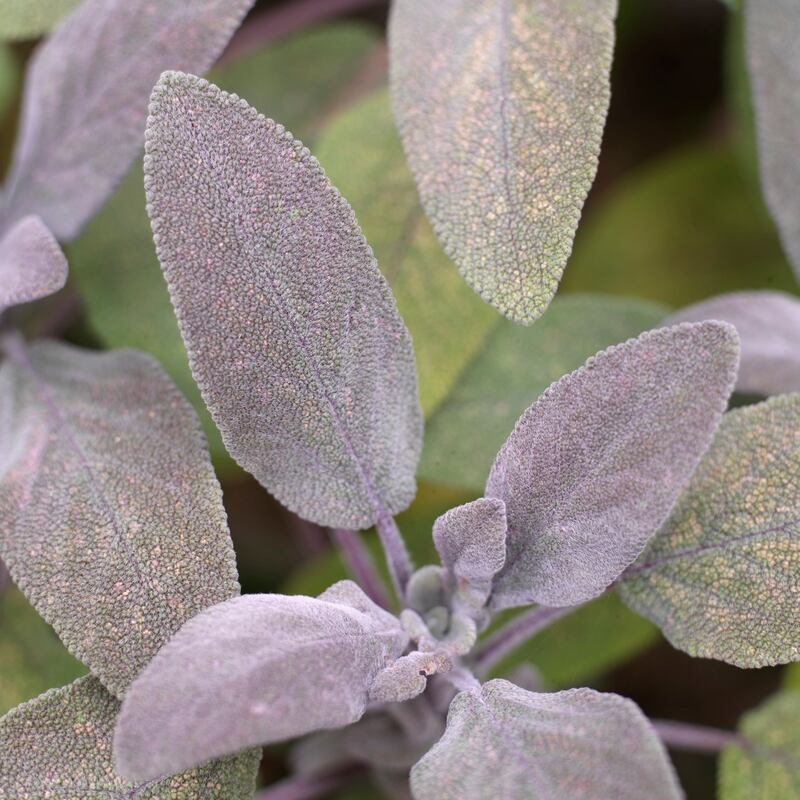
Chives, coriander, basil
Chives (Allium schoenoprasum) are also eminently suitable for the smallest of growing spaces. The grassy leaves of this hardy, bulbous perennial are packed full of spicy flavour and are delicious added to a salad, soup, sandwich or over a breakfast of scrambled eggs, as are its edible and similarly flavoursome purple flowers, which appear in early summer. To keep it happy, give it a position in full sun or light shade, a good quality soil-based compost, and keep it well watered. Shearing the faded leaves and flowers down to nearly ground level in mid-summer will encourage fresh new growth and a second, smaller flush of its pretty blooms. For something different, look out for garlic chives (Allium tuberosum), whose grassy leaves and pollinator-friendly pretty pale flowers have a rich garlicky flavour.
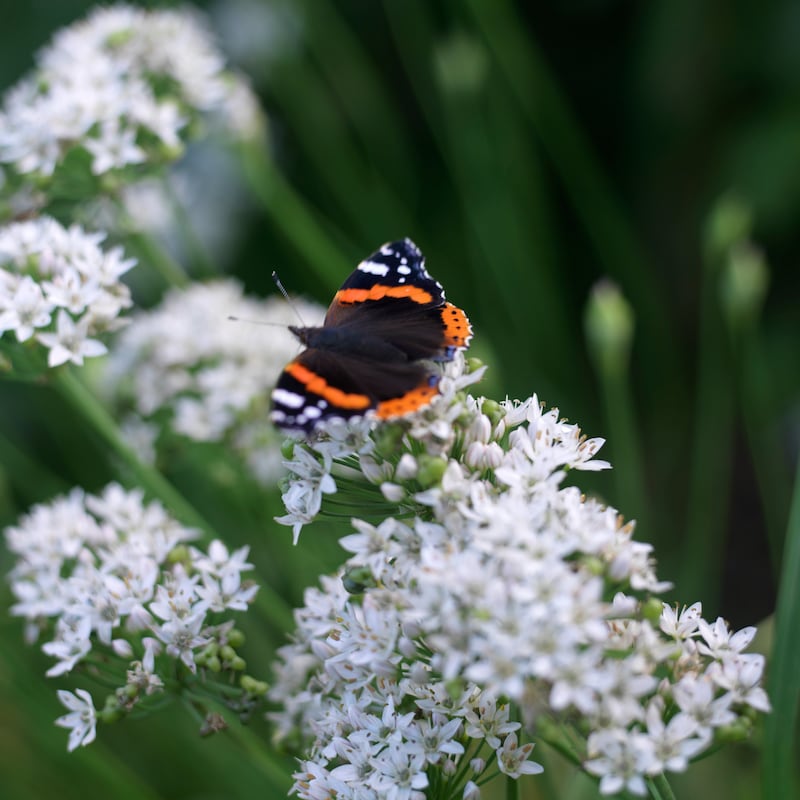
Short-lived annual herbs such as coriander, chervil and basil also pack a powerful punch in the kitchen and can be grown in containers from seed sown in the coming weeks. In fact basil does best when grown in a pot indoors/under cover as this most demanding of herbs needs plenty of heat, lots of sunlight and shelter from cold winds and heavy rain if it's to flourish. Of the countless kinds available, you can't go wrong with sweet basil (Ocimum basilicum), which is perfect for pesto, salads and pasta-sauces, especially a variety like 'Mrs Burn's Lemon'. For something different, try growing Basil 'Purple Ruffles' or 'Red Rubin', whose large, ruffled, indigo leaves will add pops of sumptuous colour to a dish.
By comparison, coriander is far more accommodating as regards its preferred growing conditions and will grow in light shade or full sun outdoors. Just make sure to keep this hardy annual herb well-watered as otherwise it will quickly bolt. Even then, the flavoursome, spherical seeds that come after its dainty white flowers make a delicious addition to a salad, stuffing or soup. Direct-sowing helps to reduce the risk of bolting as does choosing a bolt-resistant variety such as the very productive 'Leisure', 'Slow Bolt' or 'Confetti'. Chervil (Anthriscus cerifolium) is yet another useful, hardy annual herb with a subtle, grassy flavour not dissimilar to parsley that can be direct- sown successionally from now until August either indoors or outdoors into pots. It prefers a cool, moist soil and a lightly shaded spot away from direct sun. Delicious in soups, sauces, sandwiches and salads, it's much used in French cuisine.
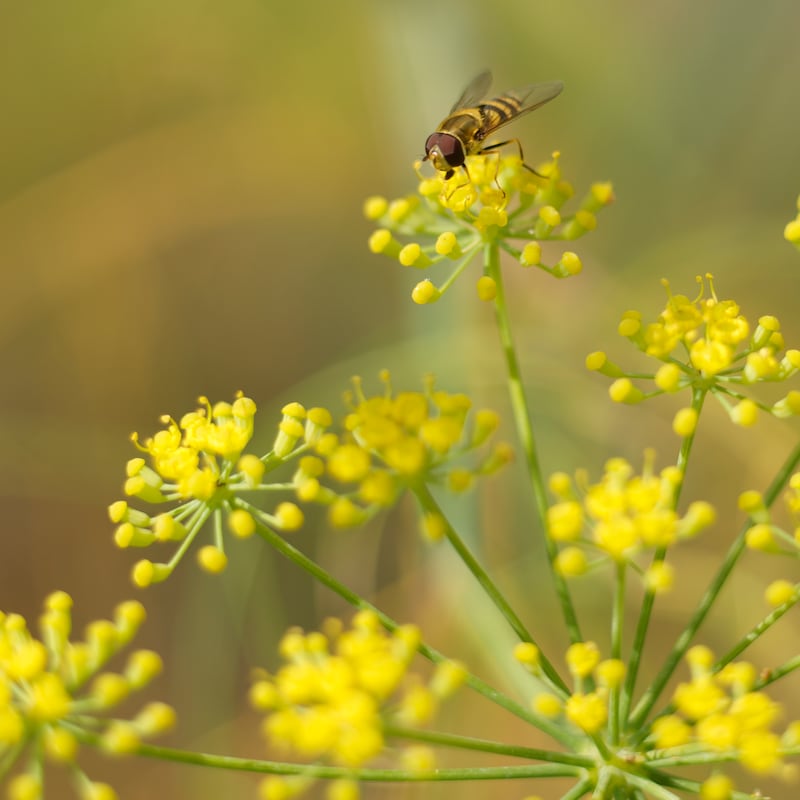
All of these compact herbs aside, even much larger kinds such as the common culinary sage, dill, fennel, bay and lofty lovage can also be successfully grown in large tubs or generous sized pots if you can’t find space for them in the ground. This is a great time to plant them for oodles of fresh, organic, flavour-filled homegrown herbs throughout the summer and early autumn months. Just make sure to follow the essential rules of successful container-growing. So ensure that there are sufficient drainage holes at the base, use a good-quality John Innes based compost, keep plants regularly watered and give them occasional liquid feeds during the growing season (I’m a great fan of organic liquid seaweed feeds such as Maxicrop, widely available from many good garden centres). Last but not least, when growing a number of different herbs together in the one container, choose likeminded bedfellows that enjoy similar growing conditions and share compatible growing habits in terms of size and speed of growth. Or as a knowledgeable gardener once said to me, think of it as akin to throwing a great dinner party where the guests naturally get along.
Specialist organic suppliers of Irish-grown herbs and/ or seed of herbs include The Herb Garden (theherbgarden.ie) and Peppermint Farm (peppermintfarm.com). Other suppliers of organically-produced herb seed include Brown Envelope Seeds (brownenvelopeseeds.com) and Irish Seed Savers (irishseedsavers.ie)
This week in the garden
Now that soil temperatures are rising and frost is a receding threat, start making direct sowings outside in the kitchen garden or allotment of many different vegetables including beetroot, parsnips, spinach, chard, radishes, runner beans, turnips, early carrots and peas. Make sure to sow into well prepared, weed-free soil raked to a fine tilth and to take careful precautions against slugs which can do a lot of damage to emerging seedlings at this time of year.

Young colonies of aphids including greenfly and blackfly often appear on the soft growing tips, flower buds and young leaves of plants at this time of year, where they feed on the sap. Resist the urge to spray them with a garden pesticide, which will harm beneficial pollinating insects as well as populations of their natural predators such as ladybirds, hoverflies and parasitic wasps. If a plant is badly infested, try gently sluicing the aphids off it with water while simultaneously rubbing them away between finger and thumb, which is usually very effective. Bear in mind that plants under stress as a result of poor or unsuitable growing conditions are far more vulnerable to an aphid attack. Also, as populations of natural predators gradually increase over the coming months, aphid attacks naturally becomes far less of a problem in organically-managed gardens.
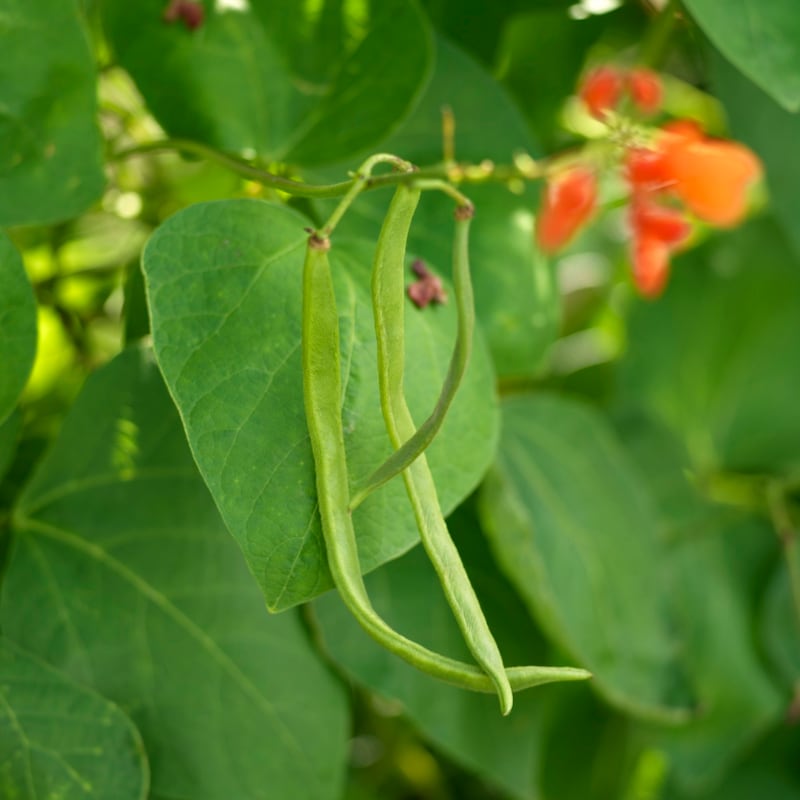
If you’re growing tender plants such as dahlias, hedychiums, bedding fuchsias and cannas in pots under cover with a view to planting them out in a few weeks time, take special care to keep them well-watered. It’s all too easy to think that the compost in a potted plant is sufficiently damp when in fact only the lower layer is powder dry. For this reason, it’s a good idea to occasionally place the pots up to their waists in water. Better again, use a liquid seaweed feed (to the recommended dilution), which will keep them hale and hearty until planting time.
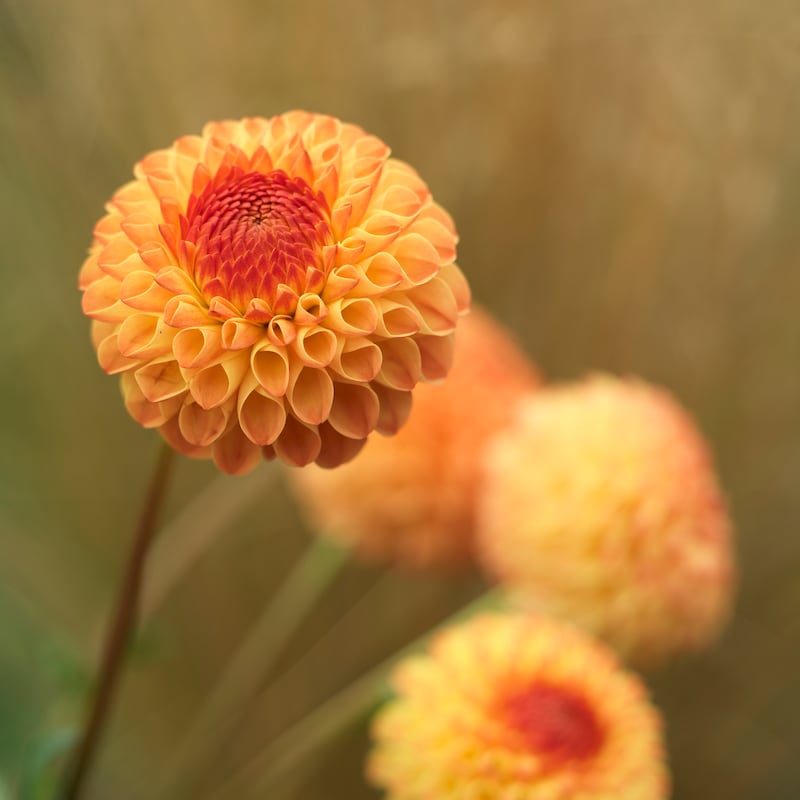
Dates For Your Diary
Tomorrow (Sunday, April 28th, 11am-5pm), Ennis Showgrounds, Co Clare, Clare Garden Festival with specialist plant sales, demonstrations, masterclasses and talks by a range of experts including organic grower Jim Cronin, nurserymen Finlay Colley and Gerry Harford and young horticulturist Conor Gallinagh, see claregardenfestival.com; Continuing until June 3rd, Kiltrea Bridge Pottery, Kiltrea Bridge, Enniscorthy, Co Wexford is holding a farewell sale as this much-loved family business closes its doors to the public following the retirement of its owner and chief potter Michael Roche and his wife Johanna, see kiltreapottery.com for details; Friday, May 3rd marks the 25th anniversary of the launch of the West Cork Garden Trail, which celebrates the diverse beauty of some of the county's loveliest gardens, see westcorkgardentrail.com for details; Starting May 6th and continuing until June 14th, Ballymaloe Cookery School, Ballymaloe, Co Cork is holding its six-week Sustainable Food Production Programme with a range of outstanding guest speakers including Patrick Holden (organic farmer, activist and founder of the Sustainable Food Trust, Joanna Blythman (author and Guardian food journalist), Tom Petherick (on biodynamic farming), Nick Barnard (of Rude Health), Rebecca Sullivan (of Granny Skills), Shane Lehane (on beekeeping), Madeleine McKeever (on seed saving) and Dr Tara Shine (on climate change), see cookingisfun.ie for details; From 8th-12th May, National Botanic Gardens, Glasnevin, Dublin 9, Sustainable Living Festival, a five-day event exploring the positive impact of sustainable living on climate change and the environment including hands-on master composting and urban food-growing workshops, lectures on how to reduce plastic pollution, boost earthworm populations and the vegan/vegetarian lifestyle, see botanicgardens.ie.













